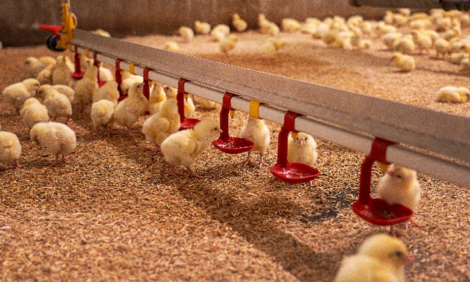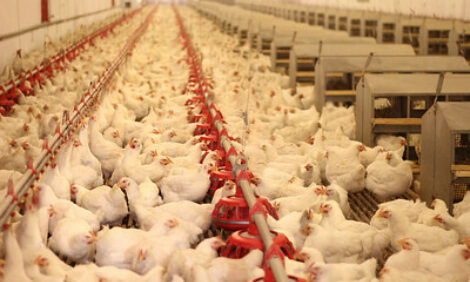



Newcastle Disease 2005: Lessons To Be Learned
By Defra - On 15 July 2005 the UK confirmed an outbreak of Newcastle Disease (ND) in pheasants at a game establishment in Surrey. Disease was confirmed on a single holding containing an estimated 11,700 pheasants, aged around 8-9 weeks. There was no evidence that the single infected premises had caused any onward spread of disease within the UK. The disease was controlled through the application of measures set out in European Community Law. This article looks at the lessons to be learned from this outbreak.
CONTENTS
FOREWORD
1. INTRODUCTION AND OUTBREAK SUMMARY
2. SUMMARY OF RECOMMENDATIONS
Project Aim
Objectives of the Lessons Learned Project
Approach and Methodology
4. LESSONS TO BE LEARNED
4.1 Introduction
4.2 Contingency Planning & Emergency Preparedness
4.3 Suspicion Phase (Alert status moves from White to Amber)
4.3.1. People
4.3.2 Communications
4.3.3 Policies
4.3.4. Structures & Organisation
4.3.5 Delivery & Systems
4.4 Confirmation Phase
4.4.1 People
4.4.2 Communications
4.4.3 Policies
4.4.4 Structures & Organisation
4.4.5 Delivery & Systems
4.5 Mobilisation and Ongoing Management
4.5.1 People
4.5.2 Communications
4.5.3 Policies
4.5.4 Structures & Organisation
4.5.5 Delivery & Systems
5. FUTURE ACTIONS
6. CONCLUSIONS
ANNEXES
ANNEX A – HIGH LEVEL MAP SHOWING INFECTED AREA & CONTROL ZONES
ANNEX B DETAILED MAP SHOWING CONTROL ZONES IN PLACE ON DAY 0
ANNEX C - DETAILED MAP SHOWING CONTROL ZONES IN PLACE ON DAY 31
ANNEX D – TIMELINE / CHRONOLOGY OF THE OUTBREAK
Suspicion Phase
Disease Control Phase (Red)
ANNEX E - PROJECT METHODOLOGY
Identification of Issues and Lessons to be Learned
Review of Issues and Recommendations
ANNEX F - FEEDBACK PROFORMA CIRCULATED TO ALL STAFF WITHIN DAYS OF THE START OF THE OUTBREAK
FOREWORD
On 21 July this year I confirmed the presence Newcastle Disease on a
holding of pheasants in Surrey. The outbreak heralded a series of ‘firsts’. It
was the first real life test of Defra’s new Exotic Animal Disease Generic
Contingency Plan, which was laid before Parliament just days into the
outbreak. It was the first opportunity for the State Veterinary Service (SVS) to
take the lead in the operational aspects of disease control in an outbreak
situation since becoming an executive agency on 1 April 2005. It was also the
first time since the outbreak of Foot and Mouth Disease in 2001 that a
National Disease Control Centre (NDCC) was established in London,
engaging Ministers in the management of an outbreak of a notifiable exotic
animal disease.
For all these reasons I am pleased to introduce this Lessons Learned Report
into the July 2005 outbreak of Newcastle Disease in Surrey. Following the
successful control and eradication of disease on the infected premises a
project has been established to identify and capture lessons to be learned
from the experience. Throughout the project we have listened to the views
and experiences of all those involved in controlling the disease both within
Defra, the SVS and the Veterinary Laboratories Agency (VLA). Comments
have also been invited from representatives of affected industries and other
stakeholders in an attempt to learn lessons to aid the development of future
policy, contingency plans and operational instructions. This report is the
culmination of that listening and learning process.
I would also like to take this opportunity to thank all those involved for their
commitment and professionalism. Throughout the outbreak I stressed the
need for us to not be complacent in our actions. I believe that this report
demonstrates our achievement of that aim, as it highlights the ability of Defra
and SVS staff to evaluate, and in some cases be critical of their own actions,
in order to improve our policies and capacity for operational delivery in the
future.
The incident was not avian influenza but the events and actions did, in many
respects, contribute to readiness for avian influenza.
Defra, the State Veterinary Service, the Veterinary Laboratories Agency and
the department’s other delivery agents remain committed to working in
partnership to ensure high standards of emergency preparedness for any
future outbreak of animal disease.
Debby Reynolds
Chief Veterinary Officer
Further Information
To read the full report, including tables Click here (PDF)Source: Defra - 26th January 2006








